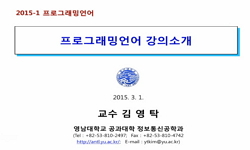<P>Delay Tolerant Networks (DTNs) are a class of emerging networks that experience frequent and long-duration partitions. Delay is inevitable in DTNs, so ensuring the validity and reliability of the message transmission and making better use of ...
http://chineseinput.net/에서 pinyin(병음)방식으로 중국어를 변환할 수 있습니다.
변환된 중국어를 복사하여 사용하시면 됩니다.
- 中文 을 입력하시려면 zhongwen을 입력하시고 space를누르시면됩니다.
- 北京 을 입력하시려면 beijing을 입력하시고 space를 누르시면 됩니다.
https://www.riss.kr/link?id=A107584825
- 저자
- 발행기관
- 학술지명
- 권호사항
-
발행연도
2010
-
작성언어
-
- 주제어
-
등재정보
SCOPUS,SCIE
-
자료형태
학술저널
-
수록면
2763-2775(13쪽)
- 제공처
-
0
상세조회 -
0
다운로드
부가정보
다국어 초록 (Multilingual Abstract)
<P>Delay Tolerant Networks (DTNs) are a class of emerging networks that experience frequent and long-duration partitions. Delay is inevitable in DTNs, so ensuring the validity and reliability of the message transmission and making better use of buffer space are more important than concentrating on how to decrease the delay. In this paper, we present a novel routing protocol named <I>Location and Direction Aware Priority Routing (LDPR)</I> for DTNs, which utilizes the location and moving direction of nodes to deliver a message from source to destination. A node can get its location and moving direction information by receiving beacon packets periodically from anchor nodes and referring to received signal strength indicator (RSSI) for the beacon. LDPR contains two schemes named transmission scheme and drop scheme, which take advantage of the nodes' information of the location and moving direction to transmit the message and store the message into buffer space, respectively. Each message, in addition, is branded a certain priority according to the message's attributes (e.g. importance, validity, security and so on). The message priority decides the transmission order when delivering the message and the dropping sequence when the buffer is full. Simulation results show that the proposed LDPR protocol outperforms epidemic routing (EPI) protocol, prioritized epidemic routing (PREP) protocol, and DTN hierarchical routing (DHR) protocol in terms of packet delivery ratio, normalized routing overhead and average end-to-end delay. It is worth noting that LDPR doesn't need infinite buffer size to ensure the packet delivery ratio as in EPI. In particular, even though the buffer size is only 50, the packet delivery ratio of LDPR can still reach 93.9%, which can satisfy general communication demand. We expect LDPR to be of greater value than other existing solutions in highly disconnected and mobile networks.</P>
동일학술지(권/호) 다른 논문
-
Energy Efficient Skyline Query Processing in Wireless Sensor Networks
- The Institute of Electronics, Information and Communication Engineers
- SEONG, Dongook
- 2010
- SCOPUS,SCIE
-
Improving Proximity and Diversity in Multiobjective Evolutionary Algorithms
- The Institute of Electronics, Information and Communication Engineers
- AHN, Chang Wook
- 2010
- SCOPUS,SCIE






 ScienceON
ScienceON




